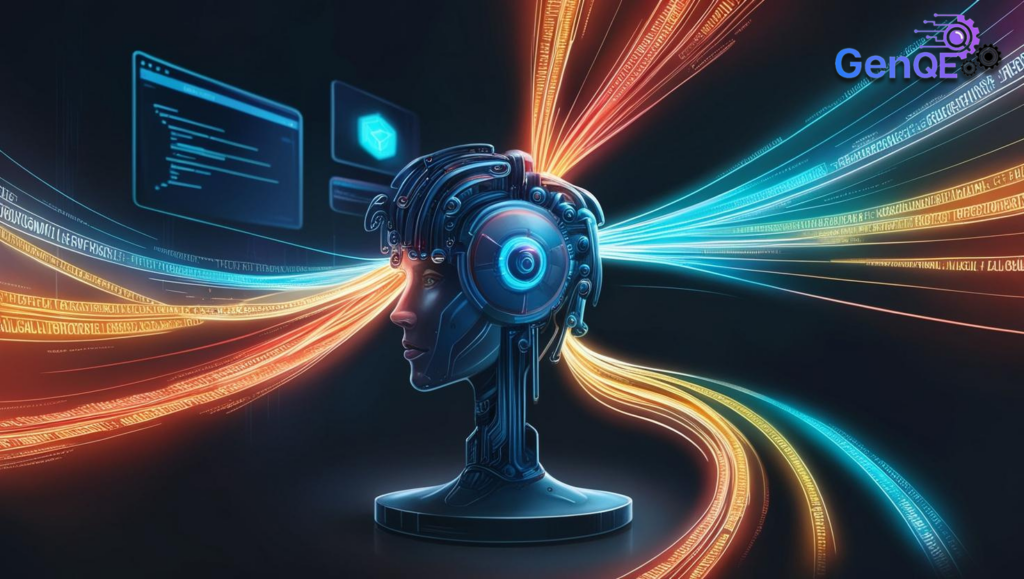
Introduction
Software testing has always been the backbone of software development, ensuring that applications work as intended before reaching end users. However, with the rise of AI and automation, traditional testing methods are evolving rapidly.
Today, AI-driven quality assurance (AI-QA) is redefining how we approach software testing—making it more intelligent, efficient, and proactive. This article explores:
✅ Why traditional testing methods fall short.
✅ How AI-driven testing is changing the landscape.
✅ The benefits and challenges of AI in testing.
✅ What the future holds for AI-powered software quality assurance.
1️⃣ The Limitations of Traditional Software Testing
Before the adoption of AI, software testing had significant challenges:
⚠ Time-consuming manual efforts – Testers needed to write, execute, and maintain scripts manually.
⚠ Brittle automated scripts – Traditional test scripts would break with minor UI or functionality changes.
⚠ Late-stage defect detection – Many bugs were found too late, increasing debugging costs.
⚠ Limited test coverage – Large applications made exhaustive testing difficult.
While manual and scripted automation testing worked for years, modern software demands a more adaptive approach.
2️⃣ How AI-Driven Testing is Changing the Game
🚀 AI-powered testing tools use machine learning, natural language processing, and predictive analytics to improve software testing. Unlike traditional methods, AI-driven testing can:
✅ Self-heal broken test cases – AI updates test scripts when UI changes occur.
✅ Generate test cases automatically – AI creates test scenarios based on real-world application usage.
✅ Predict and prevent defects – Machine learning analyzes past defects to predict future failures.
✅ Improve test coverage – AI rapidly tests multiple scenarios that would take humans much longer.
✅ Optimize test execution – AI prioritizes high-risk areas, reducing unnecessary test runs.
Tools like GenQE, Testim, Applitools, and Mabl are leading this transformation, making QA smarter and faster.
3️⃣ Benefits and Challenges of AI in Software Testing
✅ Benefits of AI-Driven Testing
✔ Faster time-to-market – AI speeds up testing, reducing release cycles.
✔ Higher accuracy – AI minimizes human errors in test execution.
✔ Reduced maintenance costs – Self-healing tests eliminate repetitive updates.
✔ Smarter test prioritization – AI analyzes risks and runs only the necessary tests.
⚠ Challenges in AI-Driven Testing
❌ Initial implementation complexity – AI tools require training and integration.
❌ AI decision transparency – Understanding how AI makes testing decisions is critical.
❌ Dependency on high-quality data – AI models need accurate test data to be effective.
4️⃣ What’s Next? The Future of AI-Powered Quality Assurance
The next wave of AI-QA will introduce:
🌍 Autonomous Testing Agents – AI will test applications without human intervention.
📊 AI-Powered Code Reviews – AI will analyze source code and suggest improvements before execution.
🚀 Hyperautomation in Testing – AI will integrate with RPA and DevOps for fully automated testing pipelines.
🔮 AI-Driven Performance Testing – Predictive models will optimize application scalability.
As AI continues to evolve, human testers will transition into AI trainers and strategists, focusing on test design, risk assessment, and exploratory testing.
Conclusion
AI is not replacing testers—it’s empowering them. By leveraging AI-driven quality assurance, teams can achieve higher efficiency, better software quality, and faster delivery. The future of software testing isn’t just automation—it’s intelligence-driven assurance.
🚀 Are you ready for the AI revolution in software testing? Let’s discuss!